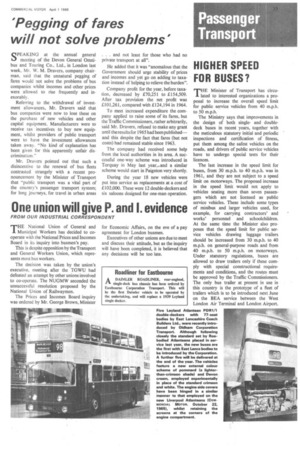Passenger Transport
Page 35

If you've noticed an error in this article please click here to report it so we can fix it.
HIGHER SPEED FOR BUSES?
Fr HE Minister of Transport has circu lated to interested organizations a proposal to increase the overall speed limit for public service vehicles from 40 m.p.h. to 50 m.p.h.
The Ministry says that improvements in the design of both singleand doubledeck buses in recent years, together with the meticulous statutory initial and periodic inspections and certification of fitness, put them among the safest vehicles on the roads, and drivers of public service vehicles have to undergo special tests for their licences.
The last increase in the speed limit for buses, from 30 m.p.h. to 40 m.p.h. was in 1961, and they are not subject to a speed limit on motorways. The proposed increase in the speed limit would not apply to vehicles seating more than seven passengers which are not licensed as public service vehicles. These include some types of minibus and larger vehicles used, for example, for carrying contractors' and works' personnel and schoolchildren. At the same time the Minister also proposes that the speed limit for public service vehicles drawing luggage trailers should be increased from 30 m.p.h. to 40 m.p.h. on general-purpose roads and from 40 m.p.h. to 50 m.p.h. on motorways. Under statutory regulations, buses are allowed to draw trailers only if these comply with special constructional requirements and conditions, and the routes must be approved by the Traffic Commissioners. The only bus trailer at present in use in this country is the prototype of a fleet of trailers which is to be introduced next June on the BEA service between the West London Air Terminal and London Airport.




















































































































